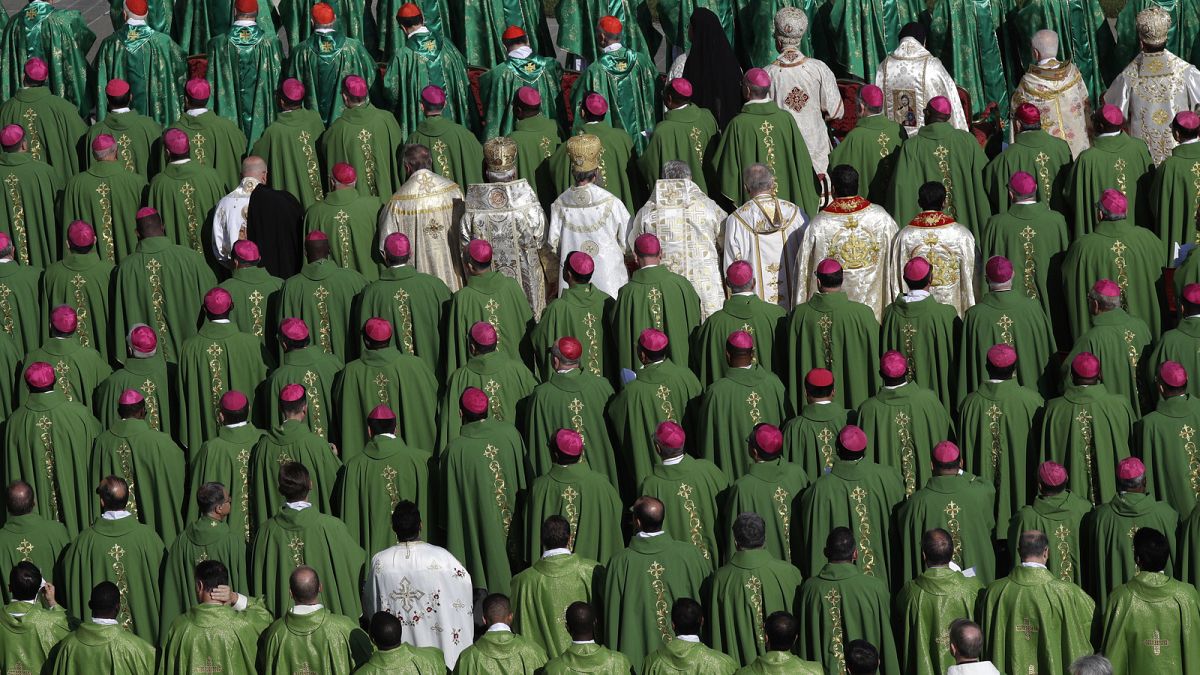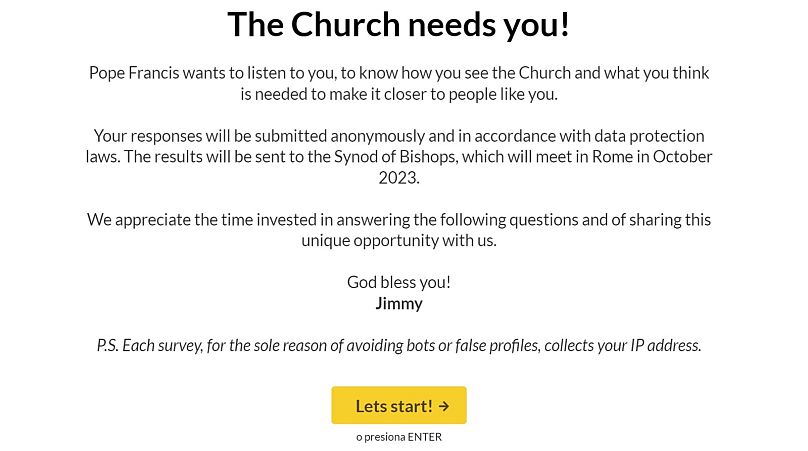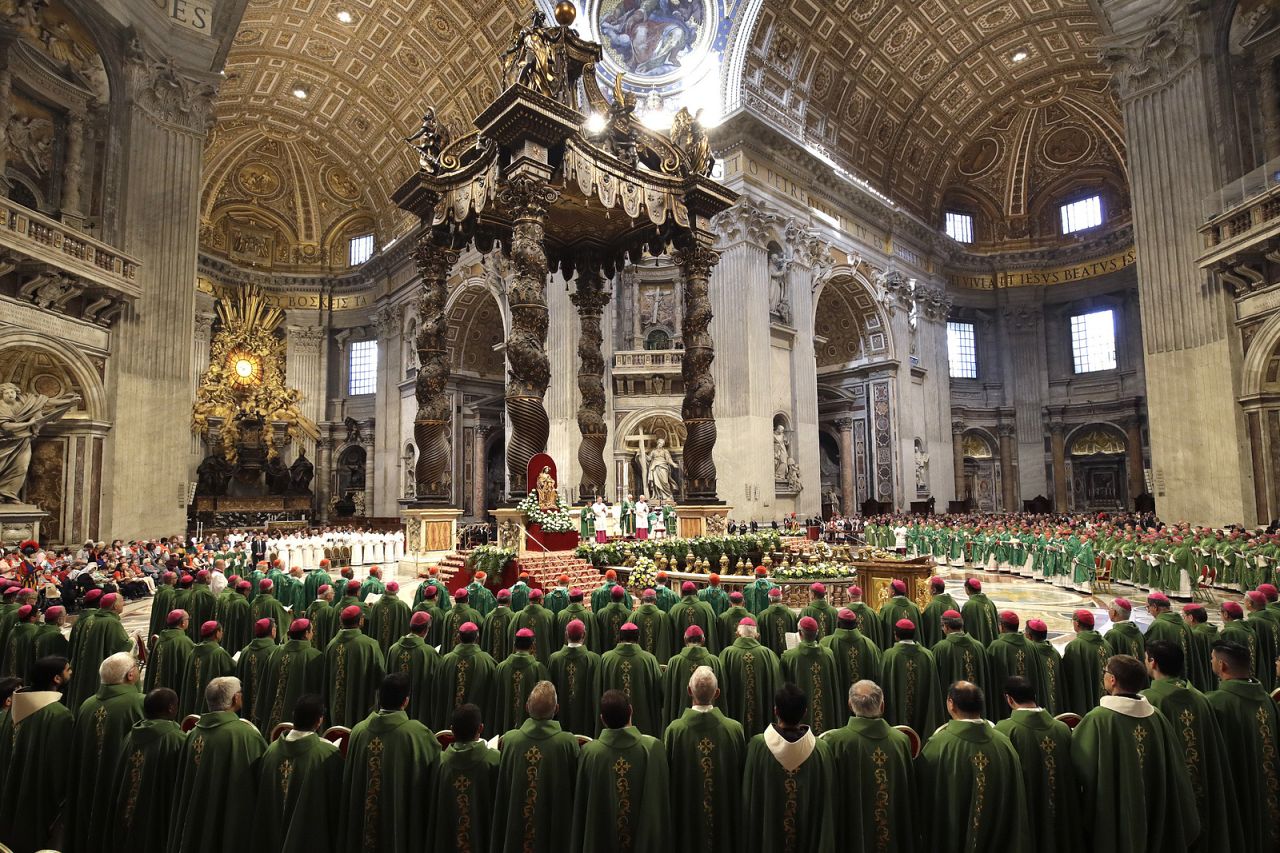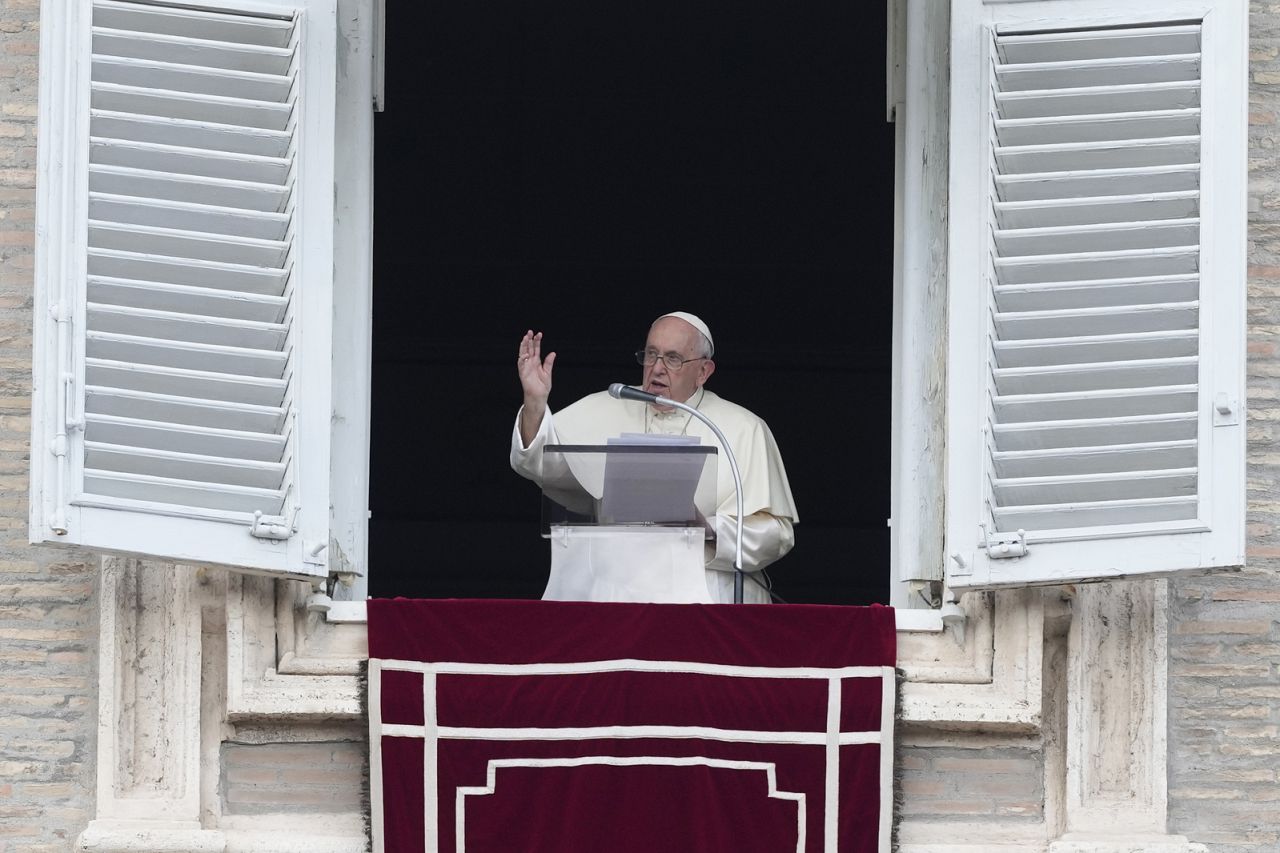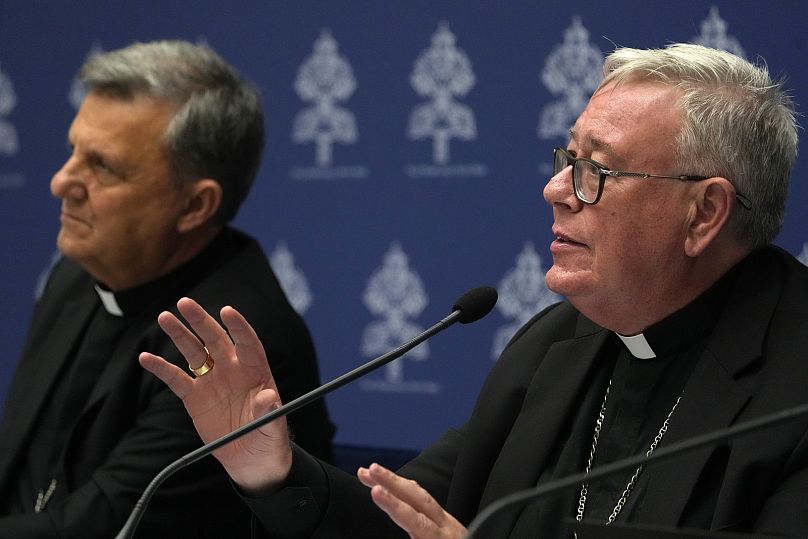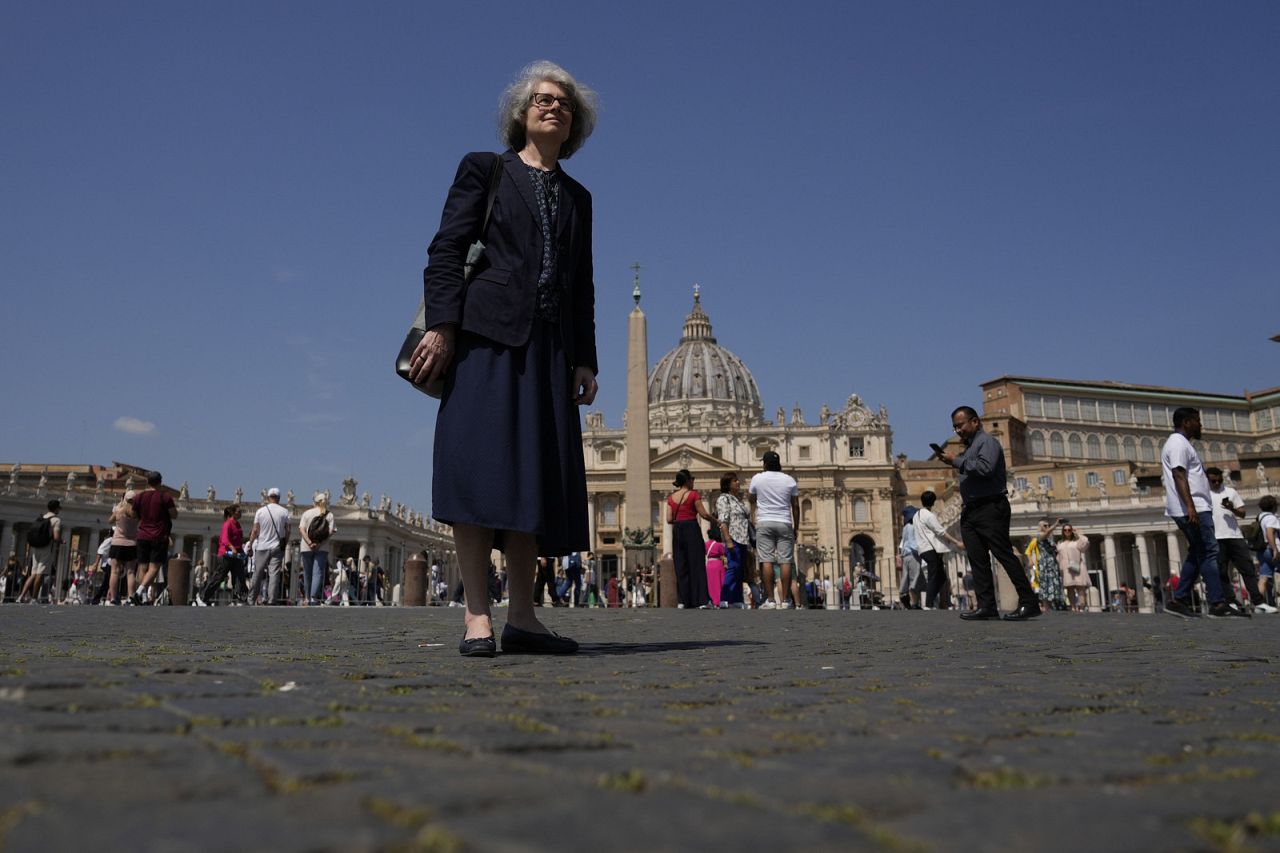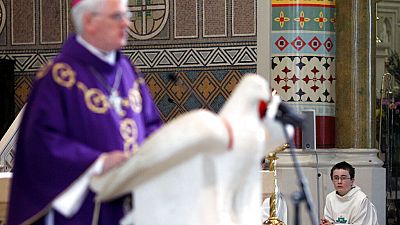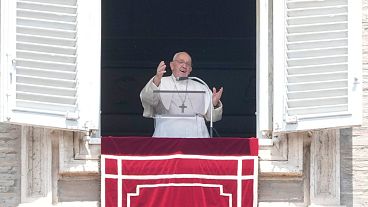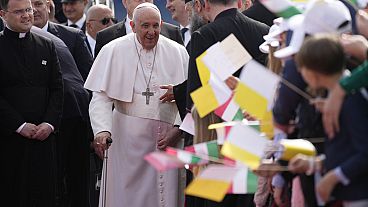The Catholic Church's Synod: What's new this time?
From online surveys to women and laypeople participating, Euronews Culture looks at how this year's Catholic Synod looks quite different from its predecessors.
"The Church needs you!"
Written in bold letters at the top of a blank, non-descript website page, the Vatican has launched a call for action to get Catholics engaging in and offering their feedback for the Synod, which will hold its first session this month. The format this time around, however, has taken a rather different shape: that of an online quiz.
Bishops have been convening at the heart of the Catholic Church in Rome every few years to consult Pontiffs on a variety of matters. But for this Synod, the Vatican has its horizons set beyond the episcopacy, picking a selection of laypeople to pitch their opinions at the assembly - and all faithful, and non-believers too, can share their thoughts in a quick survey.
From the new digital questionnaire to women joining the episcopal vote, Euronews Culture looks at what to expect from this Synod.
What is the new Synodal survey?
As part of the preparatory phase for the October assembly, the Vatican has entered unchartered territories and brought the Synod into the digital age by debuting its very own online questionnaire.
The survey has 20 questions and asks participants, who can identify or not as Catholic, to weigh in on a plethora of issues affecting the Church.
Some of the questions are personal, looking at an individual's "encounter with God", their "faith", and whether or not they have been baptised.
It also goes to the crux of some of the tougher issues afflicting the Church of late, and pulls no punches in doing so. The survey asks individuals to assess why they think the Church has been haemorrhaging followers, citing "pederasty" - in reference to its global child sex abuse scandal - as one of the potential reasons.
It also asks whether the institution does enough to communicate and dialogue with other groups -- directly mentioning the "LGBTI" community.
The poll was launched last summer, and is hosted by the Juan Diego Network - a Latino-oriented Catholic podcast site.
Since its release, it has been promoted by certain Catholic social media influencers and bloggers, namely Jimmy Akin, who has more than 23,000 followers on X, formerly known as Twitter, and over 60,000 if one includes other networks.
The questionnaire is just one part of the multitude of methods used by the Church to gather information from its congregants on their current thoughts, fears and hopes.
A US report from last September showed that many American Catholics were hopeful that the Church would do more to embrace LGBTQ+ individuals, while expressing concern about the lingering trouble with racism.
"Catholic people of colo[u]r spoke of routine encounters with racism, both inside and outside the Church. Indigenous Catholics spoke of the generational trauma caused by racism and abuse in boarding schools," it stated.
"As a Black, queer Catholic... these voices that we're hearing across the country, across the world, are calling for true listening of what is wrong and what the Church can do better at," said Tevin Williams, a New York City-based writer, while speaking to Euronews Culture. "[The report] is quite foretelling of where we're seeing people be at when it comes to that, whether it's marginalisation based on race or based on sexuality. The Church has to take these concerns seriously."
"People are longing to be part of a community," he added. "And as people look for that, and ways to strengthen that, that is what... people who are part of those communities want to see the Church reflect internally and externally."
What is the Synod of Bishops?
A product of the Second Vatican Council, which lasted from 1962 to 1965, the Synod of Bishops is an 'advisory' board of sorts to the Pope. It also had a profoundly transformative impact on the Catholic Church; updating its liturgy, scrapping Latin masses and opening the institution to a greater ecumenical dialogue with other religions.
It sees prelates from around the world meeting in Rome every couple of years, for assemblies in which the attendees draft a text looking at issues and challenges affecting the church, and eventually vote on it.
The idea stemmed from one Cardinal, Silvio Oddi, who in 1959 suggested the establishment of a "consultative body" of the Church. It was eventually picked up by Pope Paul VI, who set up the institution on 15 September 1965.
Since the meeting of the first assembly in 1967, which discussed the topic of "Preserving and Strengthening the Catholic Faith" - a particularly pressing issue at a time of Cold War divisions when both Soviet Communism and the burgeoning sexual revolution were seen as threats to global Christendom - there have been 15 other Synods, the last in 2018.
Synods had often garnered accusations of not reflecting the reformative spirit of Vatican II, creating a distinct division between bishops and lay Catholics, and shying away from tackling more controversial topics.
In response, Pope Francis has attempted to reform the institution, and in 2021 kickstarted a two-year "listening" phase to gauge as many responses from parishes around the world.
"Synod on Synodality": What's new this time around?
With a focus on "synodality", that is, engaging in multilateral dialogues with all levels and groups within the global Catholic community - this year's gathering already appears quite different to its predecessors, and reflects a decade of attempts by Pope Francis to breathe new life into the Vatican.
The Pontiff himself described synodality as "a style... a walk together", and "what the Lord expects from the Church of the third millennium."
Perhaps the biggest change we’re seeing this year is that women will actually get a seat at the table.
For the first time, women will be allowed to participate as the Synod's Secretariat has decided to invite 70 non-bishops, which will include approximately 50 laypeople and young individuals, who will enjoy full voting rights.
But even more crucially, it doesn't just see women invited to the table but holding the reins: specifically, one French nun, Sister Nathalie Becquart.
Appointed by Francis as the Synod’s undersecretary, Becquart has been travelling around the world to spread the Synod's message and encourage a more active involvement of the global Catholic community.
Her advice to younger women, especially those aiming to follow in her footsteps?
"Listening," she said back in March. "[Which] is more than simply hearing. It is a beautiful listening, in which everyone has something to learn."
Along with the online survey which has seen responses from both the faithful and non-believers, this is set to be the most participative and inclusive synod in the Catholic Church to date - "not a revolution," underlined the Holy See's Press Office back in April, "but an important change."
Yet just as tiger doesn't change its stripes, the Church too, has struggled to change its habits. Can an institution still mired in a myriad of scandals, and which the late Cardinal Carlo Maria Martini once famously described as being "behind by 200 years," finally address the concerns of its faithful?
The 2023 Synod certainly seems ready to tackle the Catholic church's problems head on, although the results are far from clear.
